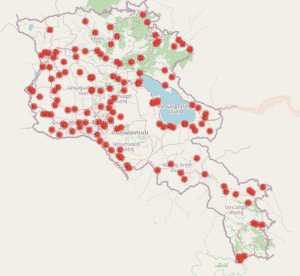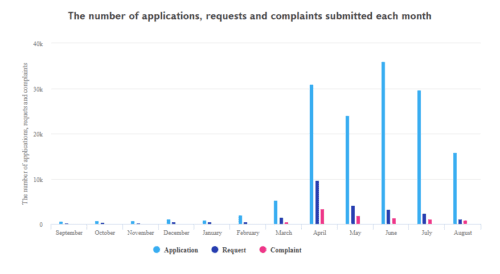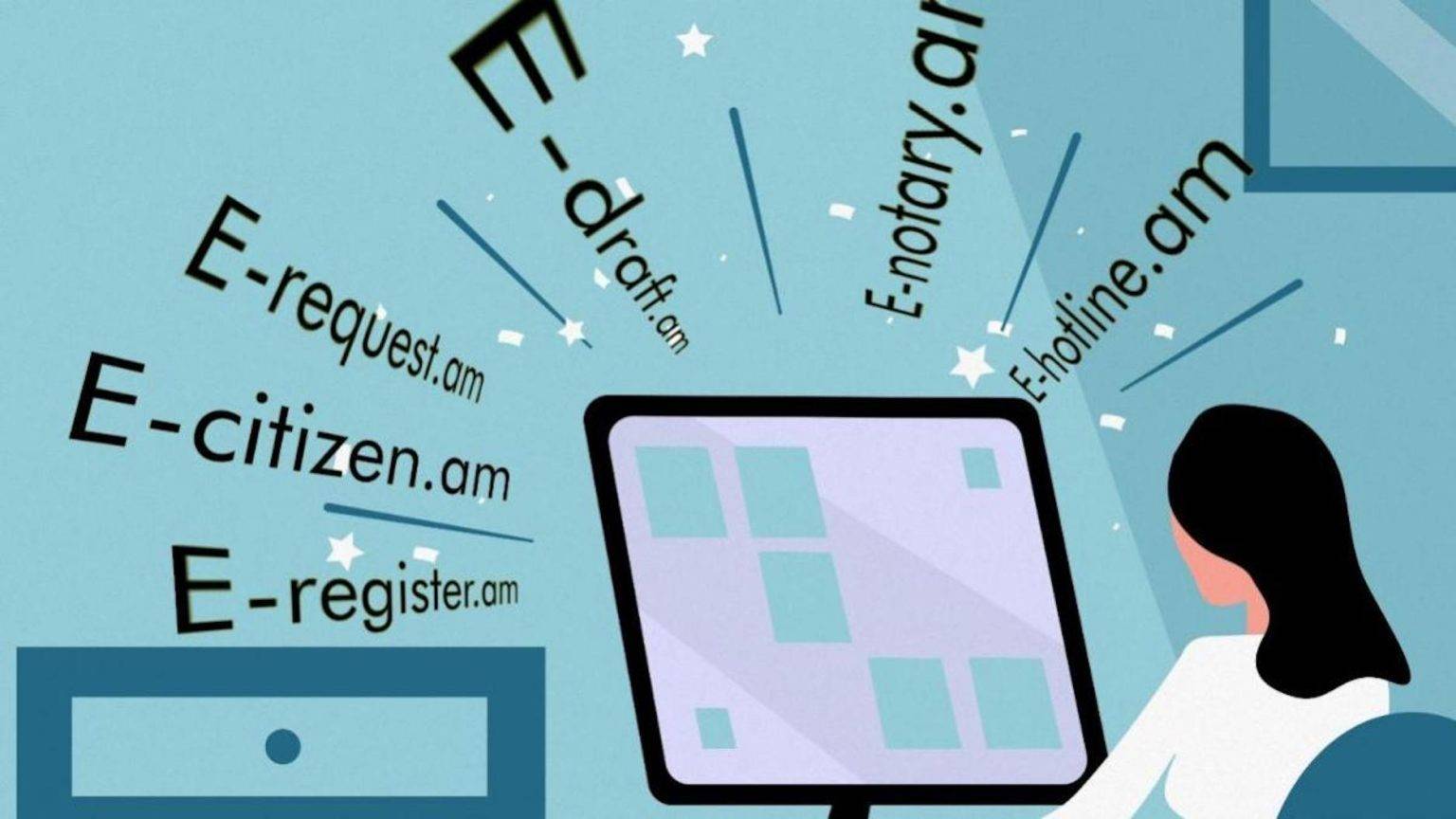COVID-19 has challenged the governments of the world, which have found themselves in a unique situation: while the state bodies have to minimize physical contact, the realization of social distance and isolation measures require more work by them. The e-government [1] tools developed in the last decades allow the governments to somehow balance the dilemma between the quarantine regime and effective governance. Over the past decades, many governments have developed extensive online systems of e-government to make the state services available for citizens, which have become important platforms for sharing awareness and organizing anti-epidemic measures. Some governments realized the necessity of consistent e-government, such as the Greek one, which has created a united online platform of state services right after the pandemic outbreak. The already launched e-tools have been supplemented by the governments with a new toolkit for monitoring and managing the pandemic situation to meet the pandemic challenges effectively. Studying these processes in different countries will allow us to understand the advantages of e-government and its role in these critical situations. As interesting examples of e-government in times of pandemic we have studied the experiences of Taiwan and Estonia. In the separate section we will introduce the e-government status in Armenia, which has progressed significantly in this sphere in the last decades.
E-government: latest trends
Since the 2000s, along with the development of information technologies, governments have actively used information and communication technologies to raise management effectiveness. “The e-Government survey” of the UN in 2018 has shown that the vast majority of UN member states include some e-governance tools in their government system. As for 2018, the majority of governments provide the following services online: utility payments (140 countries), tax payments (139 countries), and registration of new businesses (126 countries). More popular services are: payment of fines, application for a birth or marriage certificate, registration of cars, application for driving license, and identification card.
Due to this intensive investment of e-government and the development of digital communities, more and more citizens of various countries use online services. For instance, in 2019, more than 89% of US taxpayers declared their income taxes online, in Estonia – 98% (2019), in Great Britain – 93.5% (2018), in Japan – 68% (2018), 78% of high-income citizens in France (2018), 90% in Canada (2020) and so on. Many countries-similar to Estonia- have created online voting platforms. In the 2019 European Parliament elections 46.7% of Estonians voted online. In the US, like in many countries, the majority of citizens make utility payments online (56% as of 2017).
The governments, along with the already existing e-government tools, have been developing new digital toolkits in order to fight against the virus. As for 2020, April 8, 86% of the world’s governments spread information about the virus on their e-platforms.
Another way of information spread and virus control is creating applications. The most common ones are the contact tracing apps and those controlling the movements of isolated citizens. Phones with contact tracing applications record citizens’ contacts with each other. Later, when one of the contact parties becomes infected with the virus, they enter their infection information in the application, and the citizen who has communicated with them receives an alert message about the contact with the infected person. More than 29 countries use such apps as of April 16. EU countries have agreed to exchange information between their national apps. This means that citizens of the EU when moving from one country to another, won’t have to download that country’s app, as the applications of all countries can exchange information with each other. While in many countries the control of the infected people who are isolated at home is done by monitoring their phones’ geographical location. If an infected person leaves his/her flat, the phone sends a signal to the relevant monitoring authorities. Among the most common apps are the ones that provide information about the infected regions, which help people to avoid visiting such places.
This prevalence of e-government equips citizens and governments with necessary tools, which allows mitigating the spread of the pandemic by reducing social contacts. There is not enough statistical data about the usage of e-government tools by citizens during the pandemic, however, the growing involvement of citizens in recent years suggests that pre-epidemic trends were at least maintained during the lockdown. In recent years, the digitization of state services combined with the use of new e-tools by governments in times of pandemic has significantly helped the governments to perform their services during the pandemic period.
E-government in times of pandemic. Estonia and Taiwan
Estonia and Taiwan are interesting examples of the fight against coronavirus. Both countries have developed effective e-government systems over the years, which, along with the new tools, serve to fight the virus.
Estonia
99% of the state services in Estonia are available online, which ensures the uninterrupted operation of public services during the pandemic. After the pandemic outbreak the government has moved to a so-called virtual office to continue its work online. The created online tools for doing businesses give an opportunity to do business without interruption. Since April, like other countries, Estonia has also developed the COVID-19 detecting application in partnership with the private sector. The app analysis of the ID data shows whether or not a person has had contact with an infected person during the last 14 days. Before the crisis, 87% of schools were using e-solutions, which enabled them to access distance learning without disruption during the pandemic. Due to the digital health records and e-prescriptions the visits to the hospitals have been minimized, and the employees can get sick leave after online consultations with doctors.
Taiwan
Taiwan is perhaps the most successful example of fighting coronavirus in the whole world. They started to fight against the virus on the 31st of December of last year, right after the day when the news of the virus in Wuhan spread. The success of Taiwan against the virus is described in the media as a “Taiwanese model.” Indeed, this model is not free from technical solutions, which seems natural for a country with such a technical development level. One of these solutions is the so-called “digital fence” implemented by the National Communication Commission; this is when the movements of the isolated citizens are controlled by their cell phone signals. If the isolated person leaves the house with the phone, the signal system informs the relevant authorities about the violation of the isolation regime. To avoid the panic of mask consumption, the Island’s Digital Ministry along with the private sector, has developed a mask supply control app which in real-time shows the number of masks in outlets. In addition, citizens can use the app to donate extra masks to others.
These and many other measures are part of Taiwan’s e-government development strategy, dating back to the ‘90s. Since then, many exciting projects for the development of e-government have been implemented in the country. For instance, one of these projects was the “Door to Door” e-service initiative, the aim of which was to provide government e-services for as many people as possible. This initiative of the Taiwanese government allows the citizens to contact the government’s relevant agencies and ask them to send a civil servant to get necessary state services. The civil servant arrives with a computer connected to the e-portal of the government. In this way, the whole package of e-services becomes available for the citizen, so, in this case, the civil servant provides services not only on behalf of the particular agency but the whole government. The so-called e-housekeeper portal was created, which sends notifications to the citizens about more than 200 state services, such as about payment of taxes and fines, car maintenance deadlines, the roads closed by the government and so on.
E-government in Taiwan has gained outstanding achievements in the citizen-state relationship and within the government, that is to say, within different government departments. The exchange of documents between the Taiwanese state agencies is mainly done online saving a lot of time and millions of dollars. This and many other projects in the field of e-government certainly have their role in the fight against coronavirus through minimizing/reducing contact between people.
E-government in the Republic of Armenia
The development of e-government in Armenia dates back to the 2000s. Since then, Armenia has appeared in the list of countries having a high level of e-government due to a number of projects. The majority of projects were realized with the EU’s financial and professional support. In Armenia, the central platform of e-government is the e-gov.am website- created in 2010 with the support of the EU. It is a united platform for RA government agencies providing e-services. Here, the citizens of Armenia can send letters to the government, make state payments, make real estate deals, register organizations, take part in e-auctions of the Judicial Acts Compulsory Enforcement Service, apply for e-visa (by the way, Armenia is the world’s first country to have online system of e-visa application) and so on. The website is, in fact, a platform for posting e-services of various departments, which in turn are available in different windows (websites).
The experience of Estonia was very important in the development of e-government in Armenia. A number of projects were realized based on the very example of Estonia. Such projects are: citizen-government communication via e-mail, getting documents from the State Population Register, the introduction of e-services for the police for the registration of vehicles, driver’s licenses, e-court register, and so on.
Since 2007, the Mulberry system of document management has been introduced in the RA state departments, allowing transferring documents online between different agencies. It is now used by more than 65 state institutions, with more than one million documents circulating annually. As a result, 70% of circulation of documents among the state institutes of Armenia is done online.
After the pandemic outbreak, the anti-epidemic measures of the RA government were not without the usage of e-tools. Thus, the website of the National Center for Disease Control and Prevention of the Ministry of Healthcare has become the leading platform, where information about the coronavirus spread, registered cases, and the pandemic measures are reported. There is a section named “COVID-19” on the official website of the RA government, which informs people about current travel restrictions, the commandant’s decisions and instructions. There is a separate section for informing about economic and social support projects. The e-health consistent informative system of ARMED in Armenia has created a map of virus spread which is updated constantly. It shows the addresses of self-isolated citizens with an accuracy of 50 m.

Since the pandemic, there has been an increase in the use of e-government platforms among the citizens of Armenia. So, if in January of this year 900 applications were sent by Armenians via the unified e-platform of the government, in March that number was more than 5000, continuing to grow in the following months. In April, the number of requests, complaints, and applications was 44000, probably related to the government’s anti-pandemic and other social measures. Most of the applications were addressed to the RA Ministry of Labor, Social Affairs, and the RA Police.

So, in the last decades, the development of e-government globally and the online availability of state services in the pre-pandemic period allowed restricting physical contact while using state services, which is an essential factor in preventing the spread of pandemic. Now, the majority of the countries provide at least a few online services. In many countries, the citizens use a number of state services, mainly online, such as the income tax declaration. During the pandemic, the governments have also used new e-tools. The most widespread ones are the physical contact tracing apps, those monitoring the movement of citizens in self-isolation, and the apps of the geographical spread of the virus. The experiences of Taiwan and Estonia show how vital the role of advanced e-government is in critical conditions. In Armenia, e-government is also included in the general management system, which, as the analyses show, has played a growing role in the government’s anti-epidemic measures since the outbreak.
References
[1] Here, e-government is used in the widest sense of the term: the usage of information and communication technologies to increase the management efficiency and resource savings.
Bibliography
- Heeks, Richard. (2001). Understanding e-Governance for Development. 10.13140/RG.2.2.14715.46882.,
- Jing Shiang, Naiyi Hsiao, and Jin Lo, E-government in Taiwan.
- Junhua Zhang, Good Governance Through E-Governance? Assessing China’s E-Government Strategy, Journal of E-Government Volume 2, 2006 – Issue 4.,
- Okot-Uma, O. (2001). Electronic governance: re-inventing good governance.,
- Subhajit Basu, E‐government and developing countries: an overview International Review of Law, Computers & Technology Volume 18, 2004 – Issue 1,
- Verma, Deepak. (2018). Governance to Good Governance through e-Governance: A critical review of Concept, Model, Initiatives & Challenges in India.. 8. 244-269.,
- http://vxsoft.com/en/projects/mul2
- https://asia.nikkei.com/Spotlight/Coronavirus/Taiwan-s-digital-minister-draws-praise-in-Japan-for-mask-app
- https://e-estonia.com/digital-society-during-covid-19-lock-down/
- https://e-estonia.com/solutions/e-identity/e-residency
- https://e-estonia.com/solutions/e-identity/id-card/
- https://e-estonia.com/trace-covid-19-while-respecting-privacy/
- https://ec.europa.eu/idabc/en/document/2319/5938.html
- https://ec.europa.eu/idabc/en/document/7397.html
- https://ec.europa.eu/idabc/en/document/7400/5644.html
- https://ega.ee/news/e-governance-academy-helped-armenia-develop-new-tools-for-combating-corruption/
- https://ega.ee/news/e-governance-academy-helped-armenia-develop-new-tools-for-combating-corruption/
- https://ega.ee/news/e-governance-academy-helped-armenia-develop-new-tools-for-combating-corruption/
- https://foreignpolicy.com/2020/04/09/taiwan-is-exporting-its-coronavirus-successes-to-the-world/
- https://ncdc.am/coronavirus/confirmed-cases-by-days/
- https://publicadministration.un.org/Portals/1/Images/E-Government%20Survey%202018_FINAL%20for%20web.pdf,
- https://qz.com/1825997/taiwan-phone-tracking-system-monitors-55000-under-coronavirus-quarantine/
- https://www.euneighbours.eu/en/east/stay-informed/news/armenia-marks-sharp-increase-use-e-governance-tools-during-covid-19
- https://www.gov.am/am/
Author: Gevorg Gasparyan © All rights reserved.
Translator: Liana Sargsyan









